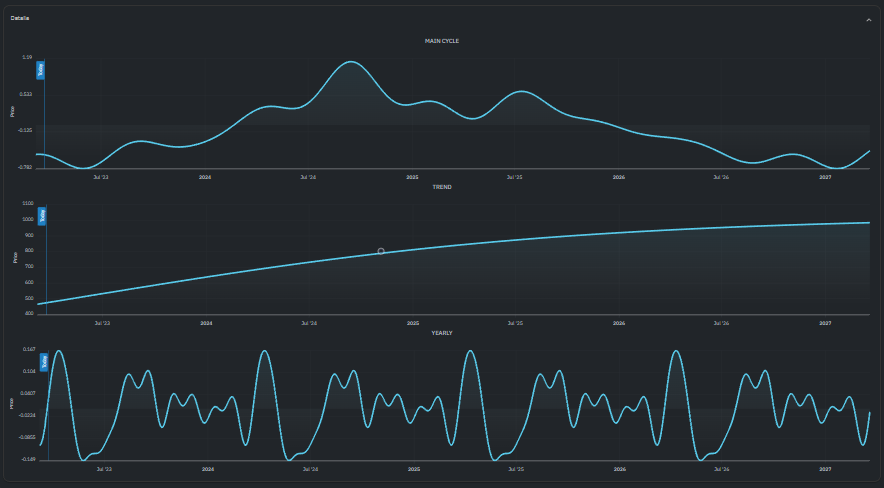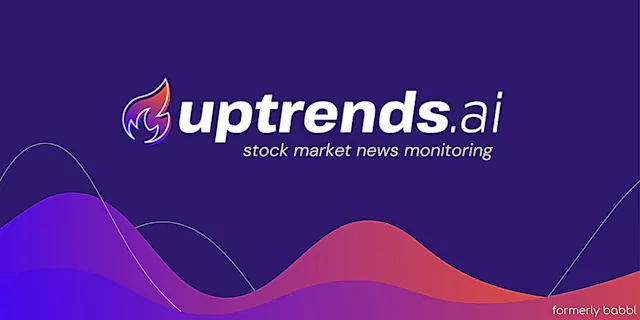20 Pro Tips For Deciding On AI Stock Analysing Sites
20 Pro Tips For Deciding On AI Stock Analysing Sites
Blog Article
Top 10 Tips For Evaluating Market Coverage Using Ai Stock Predicting Or Analyzing Trading Platforms
Market coverage is an important element to take into consideration when evaluating AI stock predicting/analyzing trading platforms, as it determines the range and depth of markets and assets you can access. Platforms with extensive market coverage allow you to diversify your portfolio and explore opportunities across the globe and can also be adapted to a variety of trading strategies. These are the 10 best ways to evaluate the market coverage provided by these platforms.
1. Evaluate Supported Asset Classes
Stocks: Make sure that the platform contains stocks from all major stock exchanges, which include NYSE, NASDAQ and LSE.
ETFs Find out if the platform allows you to pick from a variety of ETFs, which can provide you with a variety of exposure.
Futures and options. Find out if your platform offers derivatives including options, futures or other instruments leveraged.
Commodities and Forex. Find out whether there are any forex pairings available, along with precious metals, commodities for energy and other agricultural commodities.
Cryptocurrencies. Find out if they support the major altcoins and cryptocurrencies (e.g. Bitcoin, Ethereum).
2. Check the coverage area
Global markets: The platform must be able to cover the major global markets, including North America and Europe, Asia-Pacific and emerging markets.
Regional focus Make sure that the platform has a focus on specific regions or markets that coincide with your trading interests.
Local exchanges: Check if the platform supports regional or local exchanges that relate to your location or strategy.
3. Consider comparing real-time data with delayed data Delayed Data
Real-time data: Make sure the platform is able to provide real-time market information to allow for quick decision-making, particularly when trading is active.
Delayed data: Find out whether you are able to get delayed data for free, or at a lower cost. This might be enough for long-term investors.
Data latency: See if the platform minimizes data latency, specifically for high-frequency trading.
4. Evaluation of Data from the Past
In depth and breadth of historical data: Make sure that the platform has extensive historical data available (e.g. for at minimum 10 years) for backtesting.
The granularity of the data: Determine if the historical data includes intraday, daily, weekly, and monthly the granularity.
Corporate actions: Verify that historical data takes into consideration stock splits (if applicable) dividends, stock splits and any other corporate actions.
5. Check market depth and order details
To get a better price Make sure the platform has Level 2 information.
Be sure to check for live bidding and spreads of asking. This will help ensure that the price is correct.
Volume data: Make sure that the platform has specific volume data to analyze liquidity and market activity.
6. Examine the coverage of Indices Sectors
Major indices: Make sure that the platform contains important benchmarking indices, index-based strategies and other uses (e.g. S&P 500, NASDAQ 100, FTSE 100).
Data from specific sectors: To perform a targeted analysis, you should verify whether the platform contains information for specific industries (e.g. technology, health care technology, etc.).
Custom indexes. Check if you can build or monitor custom indices based on your requirements.
7. Examine the integration of News and Sentiment
News feeds - Ensure that your platform includes the most up-to-date, market-driven news feeds (e.g. Bloomberg, Reuters).
Sentiment Analysis: Find out if the platform offers tools for analyzing sentiment that are based on news, social media, or other sources of data.
Event-driven strategy: Verify that the platform supports event driven trading strategies (e.g. announcements of earnings economic reports, announcements of earnings).
8. Look for Multimarket Trading capabilities.
Cross-market Trading: Check that the platform allows you to trade across different market segments and asset classes using an unifying interface.
Conversion of currencies: Find out if the platform supports multi-currency as well as automated conversion of currencies to facilitate international trade.
Support for different time zones: Make sure the platform allows trading on global markets in different time zones.
9. Examine Alternative Data Sources
Find alternative sources of data.
ESG Data Find out whether there is any data on the environment, social, or governance (ESG data) on the platform for investing socially responsible.
Macroeconomic Data: Make sure that the platform has macroeconomic indicators like inflation, GDP and interest rates.
Review user feedback and market reputation
User reviews: Read user reviews to determine the platform's market coverage, reliability, and usability.
Reputation in the industry: Find out whether the platform has been praised as a market leader by experts in the industry or by awards.
Case studies: Search for testimonials or case studies that showcase the platform's effectiveness in certain assets or markets.
Bonus Tips
Trial time: You may use the demo, trial, or free trial to evaluate the coverage of markets and the data quality.
API access: Determine if your platform's API can access market data programmatically to run custom analyses.
Customer support. Be sure the platform provides assistance in relation to data or market inquiries.
Follow these tips to evaluate the market coverage offered by AI stock trading platforms. Select a platform that has access to the markets, data, and tools you require to be successful in trading. A comprehensive market coverage allows you to diversify and explore your portfolio. It also assists you adapt to changes in market conditions. Take a look at the top rated ai stock market for site advice including free ai tool for stock market india, trading with ai, ai investing app, investment ai, ai copyright trading, best ai stocks to buy now, best ai stock, free ai trading bot, trading ai bot, ai for investing and more.
Top 10 Tips On Risk Management Of Ai Trading Platforms That Predict/Analyze Stock Prices
Any AI platform for analyzing or predicting stocks must include risk management, which is essential to protecting your capital and minimizing losses. A platform that has robust risk management tools can aid you navigate the uncertain markets and make educated choices. Here are ten top tips to help you assess the risk management capabilities of these platforms.
1. Examining Stop-Loss or Take Profit Features
Flexible levels: Ensure that the platform lets you determine take-profit and stop-loss limits for specific strategies or trades.
Make sure that your platform supports trailing stop which automatically adjusts when the market shifts towards your.
Make sure your platform allows you to put stop-loss order which guarantee closing your trade at the amount specified, even on volatile markets.
2. Calculate the Size of Position Tools
Fixed amount - Ensure you know the amount of your positions in relation to a specific amount.
Percentage of portfolio The best way to manage your risk by establishing the size of your portfolio proportionally in terms of a percentage.
Risk-reward ratio: Check whether you are able to set the risk-reward percentage for specific strategies or trades.
3. Make sure you check for support for Diversification.
Multi-assets trade: Ensure that the platform can support trading across different asset categories (e.g. ETFs, stocks, options, forex etc.) for diversification of your portfolio.
Sector allocation: Check if your platform has tools to manage and monitor sector exposure.
Geographic diversification: Make sure that the platform allows trading in international markets to spread the geographic risk.
4. Evaluate the Margin and Leverage Controls
Margin requirements: Ensure the platform discloses clearly any limitations on margins when trading leveraged.
Limits on leverage: See whether the platform permits users to set leverage limits to manage the risk exposure.
Margin call: Check that the platform is providing timely notifications for margin calls. This can help to avoid account closure.
5. Assess the risk Analytics Reporting
Risk metrics: Ensure the platform offers key risk indicators (e.g., Value at Risk (VaR) Sharpe ratio, drawdown) for your portfolio.
Scenario assessment: Find out if you can simulate different market scenarios using the platform in order to determine potential risks.
Performance reports: Make sure you check whether the platform has detailed performance reports, including risk-adjusted returns.
6. Check for Real-Time Risk Monitoring
Monitoring your portfolio. Make sure your platform can track the risk in real-time of your portfolio.
Alerts and notifications: Check the platform's ability to provide real-time warnings of risksy events (e.g. breached margins and Stop loss triggers).
Risk dashboards: Ensure that the platform has customized risk dashboards that give you an entire view of your profile.
7. Tests of Backtesting, Stress Evaluation
Stress testing - Ensure that your platform allows you to stress test your portfolios and strategies in extreme market situations.
Backtesting. Check whether the platform permits backtesting, which is the use of data from the past to evaluate the level of risk and performance.
Monte Carlo: Verify the platform's use of Monte Carlo-based simulations to evaluate the risk and modeling a range or possible outcomes.
8. Evaluation of Compliance with Risk Management Regulations
Ensure that the platform meets the regulatory compliance requirements (e.g. MiFID II regulations in Europe, Reg T regulations in the U.S.).
Best execution: Check if the platform adheres to best execution practices, ensuring trades are executed at the most competitive available price to minimize the chance of slippage.
Transparency - See whether the platform is able to disclose risks in a clear, transparent way.
9. Check for User-Controlled Risk Parameters
Custom Risk Rules: Make sure you can define custom rules for managing risk (e.g. an amount that is the maximum loss per day, or a maximum size of tradable position).
Automated risk controls: Verify if the platform can automatically enforce risk management rules based on your predefined criteria.
Manual overrides: Find out whether the platform permits manual overrides for automated risk controls in case of emergencies.
Study Case Studies and User Feedback
User feedback: Use user reviews to determine the platform's capacity to manage risk.
The case studies or testimonials must highlight the platform’s capability to manage the risks.
Community forums - Search for yourself if the platform has a community for users that is active and where traders can discuss their risk management strategies.
Bonus Tips
Trial period: Try the demo or trial version for free to test the platform's risk management features in real-world scenarios.
Customer support: Check whether the platform provides robust support in relation to issues or questions relating to the management of risk.
Look for educational resources.
By following these tips, you can effectively assess the risks managing capabilities of AI stock predicting/analyzing trading platforms, ensuring you choose one that will safeguard your investment and reduce the possibility of losses. To stay out of volatile markets and achieve long-term success in trading it is essential to use a robust software for managing risk. Follow the top her comment is here for investment ai for more examples including copyright ai bot, artificial intelligence stocks, chart ai trading, ai stocks to invest in, ai copyright signals, best ai trading app, ai copyright signals, using ai to trade stocks, incite, best ai trading platform and more.